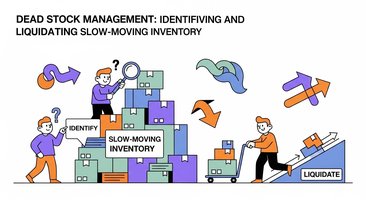When it comes to accounting, businesses have two primary methods to choose from: the accrual method and the cash method. Each method has its own advantages and disadvantages, and the choice between them can significantly impact financial reporting and tax obligations. This comprehensive guide will explain both methods in detail, helping you determine which is best suited for your business.
Understanding the Accrual Method
The accrual method of accounting recognizes revenues and expenses when they are earned or incurred, regardless of when cash is actually received or paid. This method provides a more accurate picture of a company's financial health because it matches revenues with the expenses incurred to generate them.
Key Features of the Accrual Method
- Revenue Recognition:
- Revenue is recorded when it is earned, even if payment has not yet been received.
- For example, if you deliver a service in December but don’t get paid until January, the revenue is recorded in December.
- Expense Recognition:
- Expenses are recorded when they are incurred, not when they are paid.
- For example, if you receive a bill for supplies in December but pay it in January, the expense is recorded in December.
- Matching Principle:
- The accrual method adheres to the matching principle, which ensures that revenues and related expenses are recorded in the same accounting period.
Advantages of the Accrual Method
- Accurate Financial Picture: Provides a more accurate representation of a company's financial position and performance.
- Better Decision Making: Helps in making more informed business decisions based on a comprehensive view of income and expenses.
- Compliance: Required by Generally Accepted Accounting Principles (GAAP) and International Financial Reporting Standards (IFRS) for publicly traded companies.
Disadvantages of the Accrual Method
- Complexity: More complex to implement and maintain than the cash method.
- Cash Flow Misleading: May not provide an accurate picture of cash flow, potentially leading to cash flow management issues.
Understanding the Cash Method
The cash method of accounting recognizes revenues and expenses only when cash is received or paid. This method is simpler and more straightforward, making it popular among small businesses and sole proprietorships.
Key Features of the Cash Method
- Revenue Recognition:
- Revenue is recorded when cash is received.
- For example, if you deliver a service in December but don’t get paid until January, the revenue is recorded in January.
- Expense Recognition:
- Expenses are recorded when they are paid.
- For example, if you receive a bill for supplies in December but pay it in January, the expense is recorded in January.
- Cash Flow Focus:
- The cash method focuses on cash flow, providing a clear picture of the actual cash available to the business.
Advantages of the Cash Method
- Simplicity: Easier to implement and maintain compared to the accrual method.
- Cash Flow Management: Provides a clear view of cash flow, helping businesses manage their cash more effectively.
- Tax Benefits: Can offer tax advantages by deferring income recognition and accelerating expense recognition.
Disadvantages of the Cash Method
- Inaccurate Financial Picture: May not provide an accurate representation of the company's financial position and performance.
- Not GAAP Compliant: Not accepted under GAAP or IFRS for publicly traded companies.
- Matching Principle Ignored: Does not match revenues with related expenses, potentially leading to misleading financial results.
Choosing the Right Method for Your Business
The choice between the accrual method and the cash method depends on several factors, including the size and nature of your business, regulatory requirements, and your financial management needs.
Factors to Consider
- Business Size and Complexity:
- Smaller businesses with simple transactions may prefer the cash method for its simplicity.
- Larger businesses with more complex transactions may benefit from the accrual method’s accuracy.
- Regulatory Requirements:
- Publicly traded companies and businesses seeking external financing may be required to use the accrual method.
- The IRS mandates the use of the accrual method for certain businesses, such as those with gross receipts over $25 million.
- Financial Management:
- If managing cash flow is a priority, the cash method may be more beneficial.
- For a more accurate long-term financial picture, the accrual method is preferable.
Hybrid Method
Some businesses may choose to use a hybrid method, combining elements of both the accrual and cash methods. This approach allows businesses to record revenues and expenses when they are most advantageous for tax or financial reporting purposes.
Conclusion
Both the accrual method and the cash method have their own unique advantages and disadvantages. Understanding the differences between these accounting methods is crucial for making informed decisions that align with your business goals and regulatory requirements. By carefully considering the nature of your business, financial management needs, and compliance obligations, you can choose the accounting method that best suits your needs and helps ensure your business's financial health.
Additional Resources
- IRS Publication 538: Accounting Periods and Methods
- Financial Accounting Standards Board (FASB)
- International Financial Reporting Standards (IFRS)
For further guidance, consider consulting with a certified public accountant (CPA) or a financial advisor who can provide personalized advice based on your specific business circumstances.





